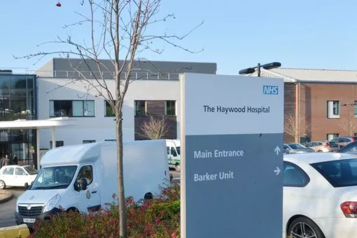Signposting in Circles - Michael's Story

Signposting is an important part of care navigation. It enables patients to get the right care by ensuring that they are at the right service, and it helps the NHS to manage their workloads effectively.
Michael* struggled to get urgent care for his child’s injury, which occurred with several family members present who mostly believed an ambulance was needed. After calling 999 and being advised that an ambulance and paramedics were not required for this particular injury, Michael called NHS 111 who signposted the pair to Haywood Hospital. Once they had arrived, they followed the standard process of triage and assessment which took about 30 minutes. They were then informed that they could not treat this injury at the Haywood Hospital. Michael and his son were referred to the Royal Stoke Hospital which they had to travel another 20 minutes to get to.
Why would NHS 111 refer my son to Haywood Hospital when it was not the appropriate hospital to attend? Having the Royal Stoke Hospital as the only main hospital servicing the whole of Stoke-on-Trent doesn’t make sense considering the population and geographical spread.
According to University Hospital North Midlands NHS Foundation Trust (UHNM), who run the Royal Stoke University Hospital and County Hospital, they provide general hospital services for approximately 900,000 people locally in Staffordshire, South Cheshire, and Shropshire with nearly 15,000 patients attending each month across both sites. The Royal Stoke University Hospital is one of the largest hospitals in the West Midlands and due to its Major Trauma Centre status, many emergency patients are brought to them from an even wider area.
Michael added to his concerns that for some Stoke-on-Trent residents, travel time to the Royal Stoke University Hospital could be over an hour depending on their means of travel.
Upon their arrival, it took an hour and a half to be triaged and a further hour and a half for the orthopaedic consultant to review the injury and request an x-ray. After an hour the consultant returned to suture the injury. Michael shared his concerns regarding the extensive waiting times
It was a double trauma for the boy – the injury and the tortuous long journey to treatment.
He raised the need for change to improve the information, streamline processes and avoid unnecessary signposting, travelling, and use of services.
In a time when people are being saturated with messages about the best use of NHS services it is essential that people are referred to the correct place so to not undermine the public's confidence in NHS messaging.
*Please note that the names in these stories are not their real names and have been anonymised.
What's your story?
We rely on people's stories, like Michael's, to help us improve local health and social care services.
If you'd like to have your health or care story shared, for example on our website, across our social media, or in our newsletters, then please get in touch.

